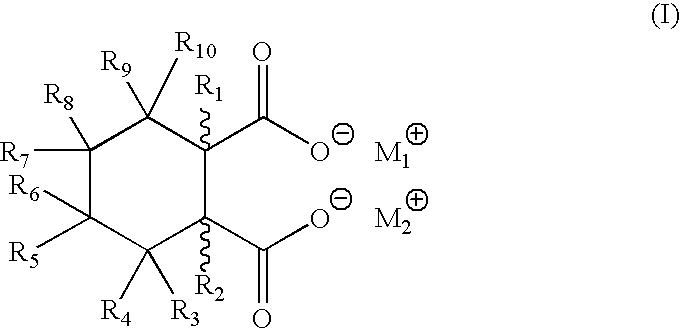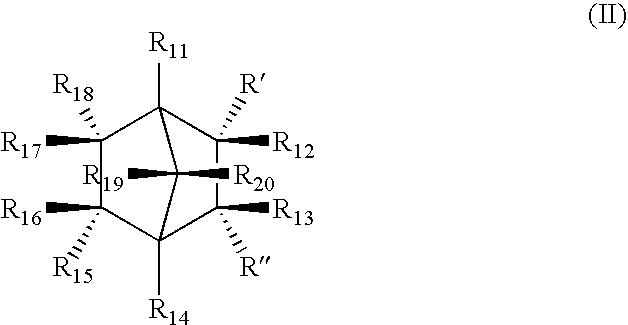Polymer additive compositions for bimolecular nucleation in thermoplastics
a technology thermoplastics, which is applied in the field of polymer additive compositions for bimolecular nucleation in thermoplastics, can solve the problems of inability to disclose the ability of each patent, unwanted high levels of beta-crystals, and inability to meet the requirements of large-scale industrial applications, and achieves exceptional nucleation efficacy, low beta-crystal polypropylene structure, and high degree of automation. the effect of the effect o
- Summary
- Abstract
- Description
- Claims
- Application Information
AI Technical Summary
Benefits of technology
Problems solved by technology
Method used
Image
Examples
Embodiment Construction
[0036] As noted above, in order to develop a proper polyolefin nucleator compound or composition for industrial applications, a number of important criteria needed to be met. The inventive methods meet all of these important requirements very well in particular by producing in situ compounds that act as excellent nucleating agents through the reaction of the preferred, non-limiting, compounds of either Formula (I) or (II) with the cations provided by the organic salts (carboxylates, for example). Thus, as one example, the presence of sufficient amounts of calcium stearate with the bicyclic acids of Formula (II), produce calcium bicyclic salts which are excellent nucleating agents for target thermoplastics (sodium stearate thus produces disodium bicyclic salts, as another non-limiting example), preferably, though not necessarily, polyolefins, in particular, polypropylenes. Such bicyclic salts provide excellent high peak crystallization temperatures in a variety of polyolefin formulat...
PUM
| Property | Measurement | Unit |
|---|---|---|
| haze | aaaaa | aaaaa |
| haze | aaaaa | aaaaa |
| transparent | aaaaa | aaaaa |
Abstract
Description
Claims
Application Information
 Login to View More
Login to View More - R&D
- Intellectual Property
- Life Sciences
- Materials
- Tech Scout
- Unparalleled Data Quality
- Higher Quality Content
- 60% Fewer Hallucinations
Browse by: Latest US Patents, China's latest patents, Technical Efficacy Thesaurus, Application Domain, Technology Topic, Popular Technical Reports.
© 2025 PatSnap. All rights reserved.Legal|Privacy policy|Modern Slavery Act Transparency Statement|Sitemap|About US| Contact US: help@patsnap.com



